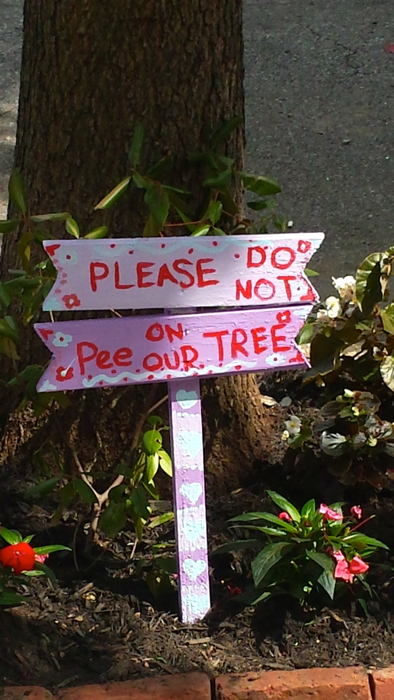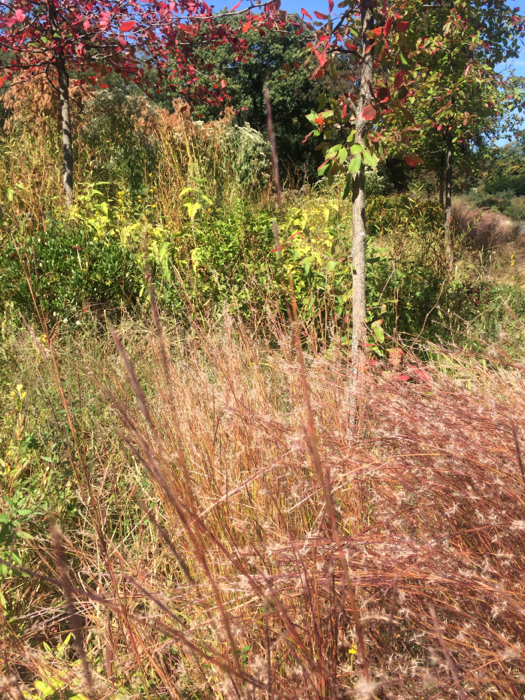The Dirt: The Love and Care of Street Trees
Cold weather is approaching fast! Next week, we might get our first real frost, and snow that actually stays with us for a while. Assuming you followed my advice last month and weeded, cleared most spent flowers, and mowed your grass one last time, there shouldn’t be too much left on your plate. If not,…


Cold weather is approaching fast! Next week, we might get our first real frost, and snow that actually stays with us for a while.
Assuming you followed my advice last month and weeded, cleared most spent flowers, and mowed your grass one last time, there shouldn’t be too much left on your plate. If not, this coming weekend provides one last opportunity before the promised first snow next week. It’s time to cut the last of the basil and mint, or bring it inside with the houseplants that summered on the patio or terrace.
If you have any planters made out of terra-cotta, any tropical plants, dahlia or caladium, this is it! Time to dig it out from the ground and store it inside. Then you can make sure to turn off the outdoor faucet valve in the basement, and remove or disconnect any timer, manifold and hose outside. With so little left to do in your backyard, we can bring a little bit of love to the street trees.
For the past two years, I have watched this acacia grow out of the root ball of one of the million trees planted by the city. At first, it was pretty small, maybe three or four feet. By now, it is almost as tall as the Gingko the city planted in that bed. Technically, you don’t need a license to weed street tree beds, but that thing is as large as the tree, and I really don’t have time to get arrested (falsely) for destroying city property. So I decided to go legit and get the Citizen Pruner license, so I could take a loper to the interloper.
We have almost a million new trees in the city, and maybe one of them is your block. They can all use a little bit of love. Ten things you can do to help a street tree:
*Remove the litter in the tree bed. I like to take a soft rake and wear gloves for that job. You never know what sort of nasty thing you will find in a tree pit.
*Cultivate the soil by loosening the surface. With a hand tool, you can work the first inch or so of soil. Loosening the soil helps the roots breathe, and the water get where it’s needed.
*Plant some daffodil bulbs. Grab a handful of bulbs and drop them from hip height, then take a serrated trowel and place them six inches down wherever they fell. You can also plant crocuses or scillas, or even alliums if the tree doesn’t shade the tree bed too much. I would stay away from tulips because the squirrels like them a bit too much.
*Add a thin layer of compost (one bag per tree bed is plenty), but stay away from the trunk, because constant soil contact above the natural planting height will rot the bark of the trunk.
*Remove the guys or straps holding the tree in place after one year (you can check the year on the plastic band to make sure). You can remove the stakes if you want, but I feel they provide protection for a young tree. By the time they fall apart, the tree will be large enough to live in the mean streets of New York.
*Plant some hardy, tough perennials like heucheras (coral bells) or tiarellas (foam flowers). Next spring, you can add wax begonias or impatiens. When they wilt, it’s an indication you need to water your tree.
*Add a sign to encourage people to curb their dogs. I find signs painted by children (as in the picture above) work on most people. Whatever you decide to write, DO NOT screw the sign to the tree trunk.
*Add a bag of organic mulch in your favorite color, leaving two or three inches around the trunk free and clear. I like black mulch because it makes the color of green leaves pop, but anything works.
*Water! A tree needs 10 to 15 gallons of water once a week if it doesn’t rain. If you are lucky enough to have a new tree, you can water more often, but 15 gallons a week is very nice, so don’t let best stand in the way of good enough.
*Install a tree guard. It doesn’t have to be super fancy: Four posts that are about 18 to 20 inches above ground in each corner of the tree bed and a rope will work. Or you can go to your favorite garden store and get metal or wooden guards. Just make sure you leave a foot free from the curb, to allow for car doors.
To do more (like take out that acacia or prune broken branches), you will need a certificate as a Citizen Pruner. Trees New York offers classes at various community centers in the spring and fall, and with a million new trees, there is plenty of work for all of us.
The Dirt is a monthly column that explores gardening in Brooklyn by Brownstoner commenter and Brooklyn garden designer Marie-Helene Attwood of Edible Petals. Each month, she will answer any questions about Brooklyn gardening over the following weekend.






Although people do it all the time, you are not legally allowed to put a tree guard around the pit without a permit and one of the 4 or 5 city approved designs. There are forms on the nyc.gov site along with the approved designs that you have to fill out and go through to get the permit to place a tree guard around a tree. Not to say people dont do it their own way and probably don’t often get fined for it, but it’s not legal to do so without permits and city inspector sign-offs after placement.